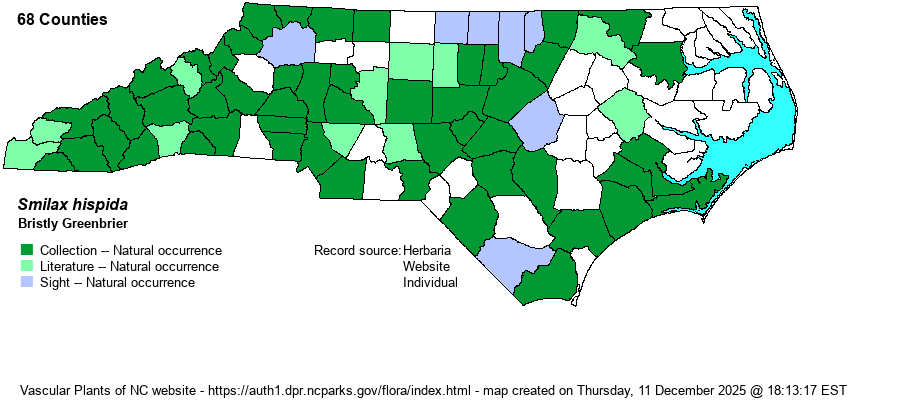Show/Hide Synonym
| taxonName | relationship | relatedTaxonName | relatedTaxonRefText | relComments |
|---|
|
|
|
|
|
|
|
| Smilax hispida | = | Smilax tamnoides | Flora of North America (1993b, 1997, 2000, 2002a, 2002b, 2003a, 2004b, 2005, 2006a, 2006b, 2006c, 2007a, 2009, 2010) | , misapplied | | Smilax hispida | = | Smilax tamnoides | Godfrey and Wooten (1979, 1981) | , misapplied | | Smilax hispida | = | Smilax tamnoides | Kartesz (1999) | , misapplied | | Smilax hispida | = | Smilax tamnoides | | , misapplied | | Smilax hispida | = | Smilax tamnoides | Wofford (1989) | , misapplied | | Smilax hispida | = | Smilax tamnoides | Wunderlin & Hansen Flora of Florida (3) | , misapplied | | Smilax hispida | = | Smilax tamnoides | Godfrey (1988). Key for the woody species based in part on Godfrey (1988). | , misapplied | | Smilax hispida | = | Smilax tamnoides | Godfrey (1988). Key for the woody species based in part on Godfrey (1988). | , misapplied | | Smilax hispida | > | Smilax tamnoides var. hispida | Fernald (1950) | | | Smilax hispida | > | Smilax tamnoides var. tamnoides | Fernald (1950) | | | Smilax hispida | > | Smilax hispida var. australis | Small (1933, 1938) | | | Smilax hispida | > | Smilax hispida var. hispida | Small (1933, 1938) | | | Source: Weakley's Flora |
|

